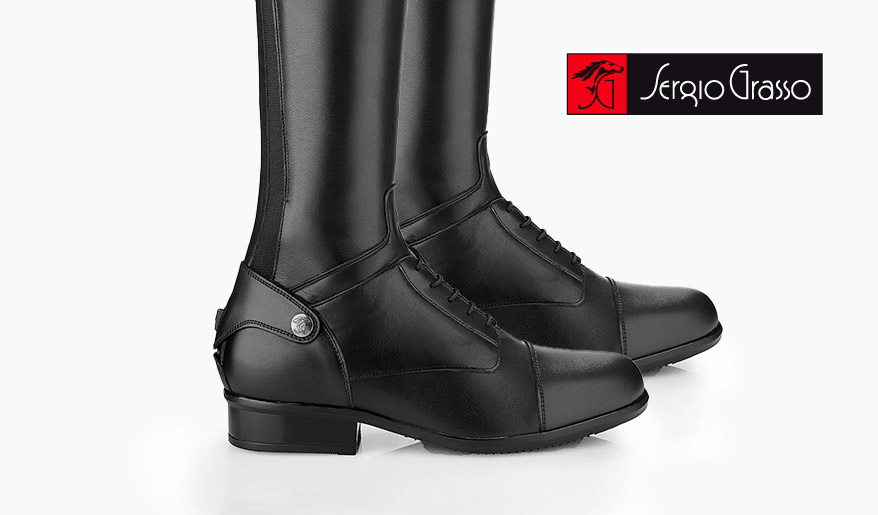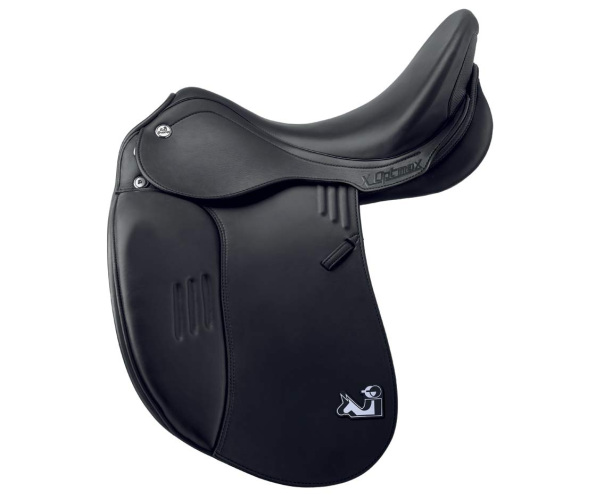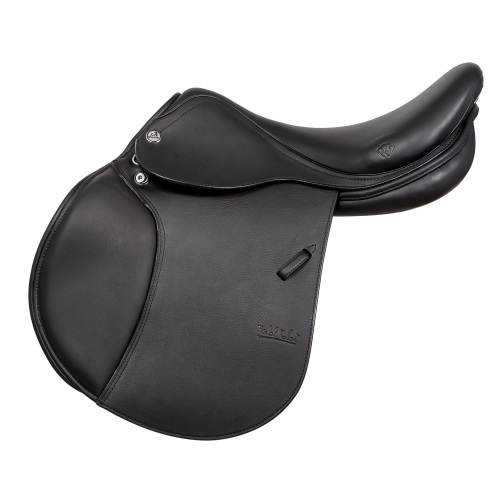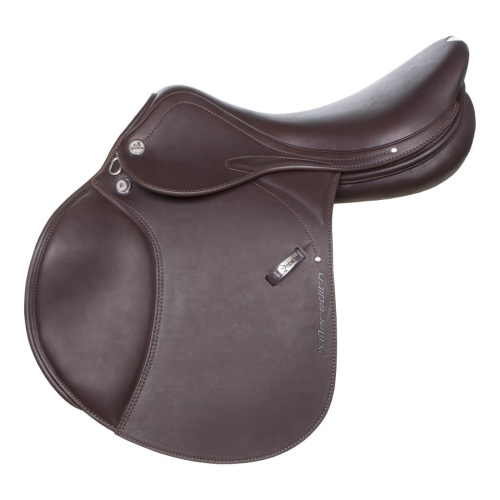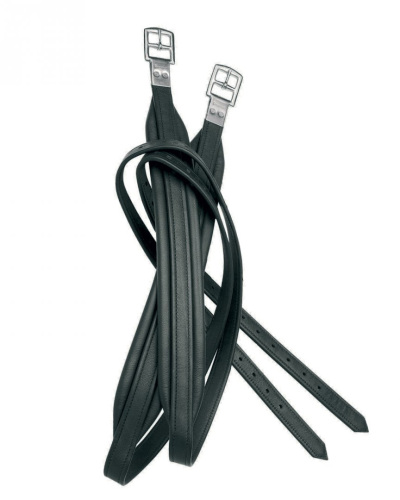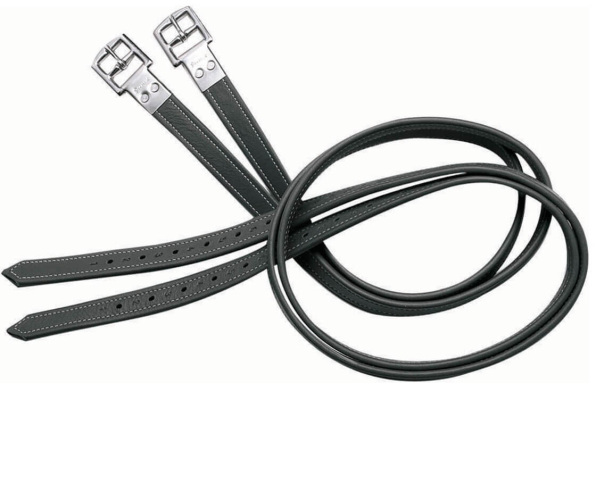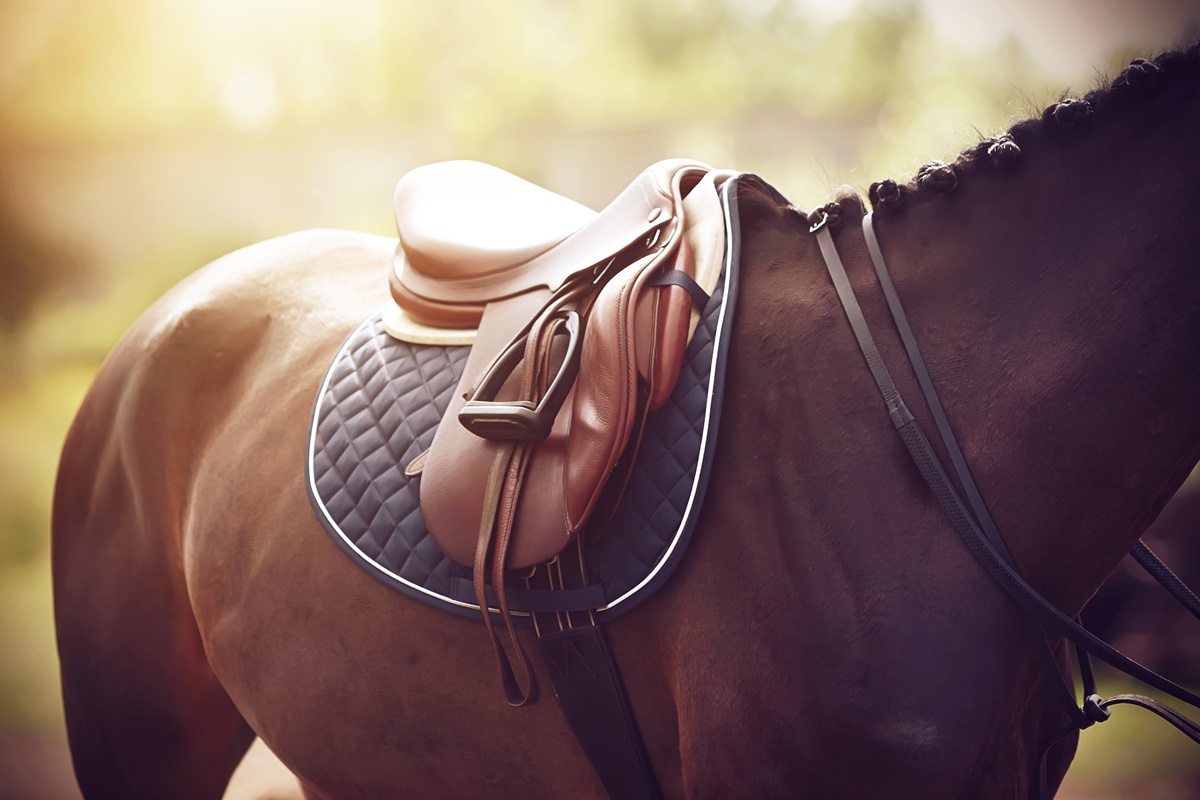
The saddle is one of the most important equestrian tacks because it works as a mediator between the horse’s back and the rider. Correct saddle fit is crucial for the uninterrupted exchange of information between the horse and the rider, as well as for the animal’s health. That’s why it’s worth taking a deep dive into the saddle fitting topic.

What is saddle fitting?
The saddle fitting service is conducted by a professional saddle fitter that chooses the right saddle for the horse and rider. There are a few criteria for a proper saddle fit: anatomical features of both the horse and rider, riding style, and special requirements of chosen equestrian discipline.
It’s worth noting that the process of saddle fitting doesn’t just involve the adjustment of the pommel's width – even though it’s an extremely important part that directly impacts the fit of the saddle to the anatomical shape of the horse’s back – but the process contains several steps.
In case of horses with standard anatomy, the adjustment of the pommel might simply be enough. However, many other horses might require a change of the filling inside the panels to alter their shape and fit the horse’s back. Saddle fitting is a complex task that requires a lot of precision, that’s why it should be performed by an expert. Most of the modifications can only be done with the specialist tools that any good saddle fitter owns.
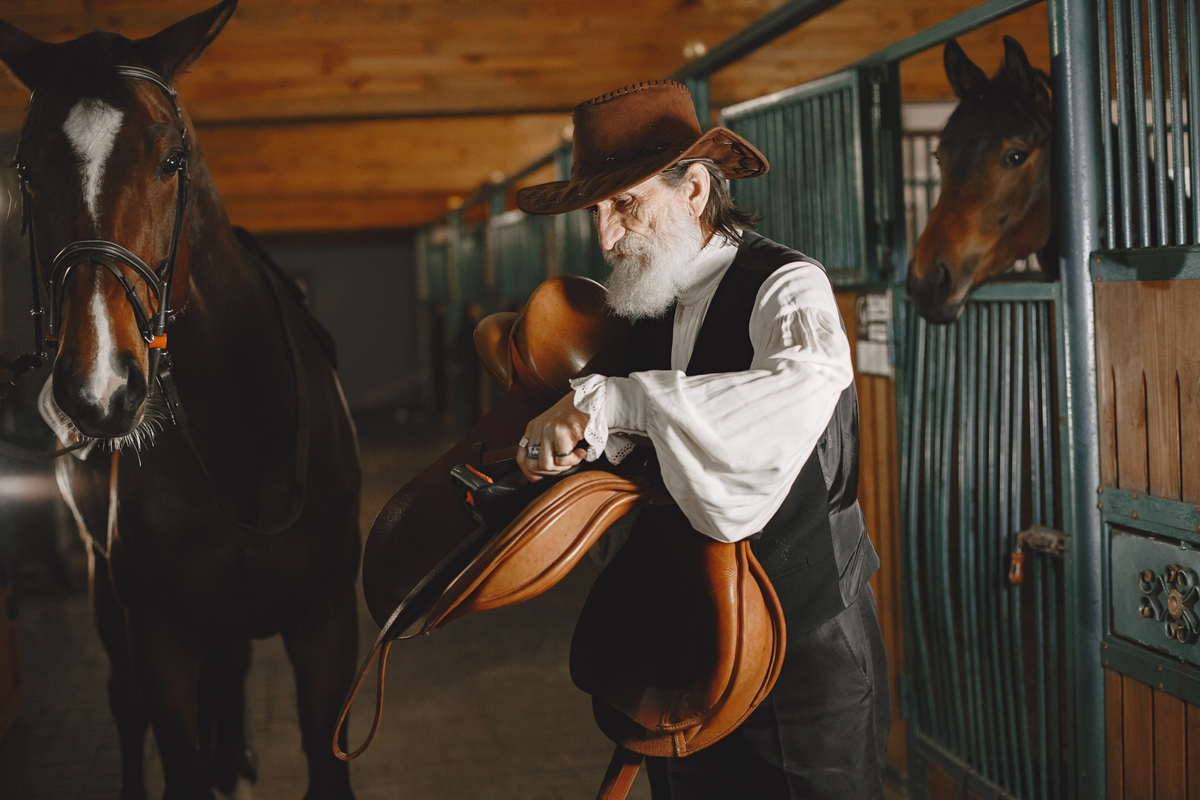
Why is proper saddle fit so important?
A nicely fitted saddle ensures comfort for a horse and rider, while an ill saddle fit prevents good communication between the pair. An incorrectly fitted saddle might lead to numerous health problems - that’s why it’s so important to perform saddle fitting carefully.
If a saddle is ill-fitted, then the weight of the rider is not distributed evenly, which in consequence creates pressure spots and a less balanced saddle. Such saddle won’t be comfortable to use, there will be a loss in functionality, and most importantly, it will be a health hazard for the horse.
A horse with an incorrectly fitted saddle might be less cooperative to work with, and after some time it might develop abrasions and back stiffness. What’s more, if we continue to use that saddle, a horse might develop degenerative changes that will completely put it out of work. Only a correctly fitted saddle will ensure full comfort and effective training.
Types of saddles
This type of saddle is specifically designed for horse show jumping. It has a special design near the saddle flap that allows the rider to have a correct leg position, better balance, as well as body control during a jump. The distinctive construction and a squarer look of the cantle are there to aid the horse’s back during a jump. Jumping saddles are characterized by their shallow or medium-deep seats that allow a rider to quickly and easily change their position.
Dressage saddles have longer, vertical flaps that allow the rider to have a straighter leg position and perform high-level movements. The seat in this type of saddle is deep and encourages the rider to have an upright upper body position. The back of the saddle is specifically designed to increase the effectiveness of the horse’s training and to give a horse the maximum freedom of movement, especially in the horse's shoulder blades area.
This type of saddle combines the characteristics of a jumping and dressage saddle. That’s why it can be used for both of these disciplines, however, its effectiveness is limited. All purpose saddles can also be used for recreational riding and trail rides.
This type of saddle was specifically created for riders that compete in endurance races. The most important features include its light weight and high comfort. These saddles often have a special design that allows a rider to attach a bag to it.
Pony saddles are specifically designed to fit the anatomical shape of kids. These saddles offer a high level of safety.
These extremely durable saddles are specifically designed for eventing competitions. Thanks to their versatility and good functionality, a rider can easily perform dressage movements, get over jumps, and conquer a cross-country course.
These saddles are used for hippotherapy and rehabilitation with the use of horses. They are built to maximize the rider’s stability and safety, while the special handle aids the rider’s balance.
Western saddle
Western saddles are working saddles made of real animal leather. They are widely used for Western competitions. They have characteristic wide saddle bars that distribute the rider’s weight evenly and increase the horse’s comfort. They also have a special horn, whose size depends on the Western discipline. Western saddle fitting is quite similar to that of other saddle models.
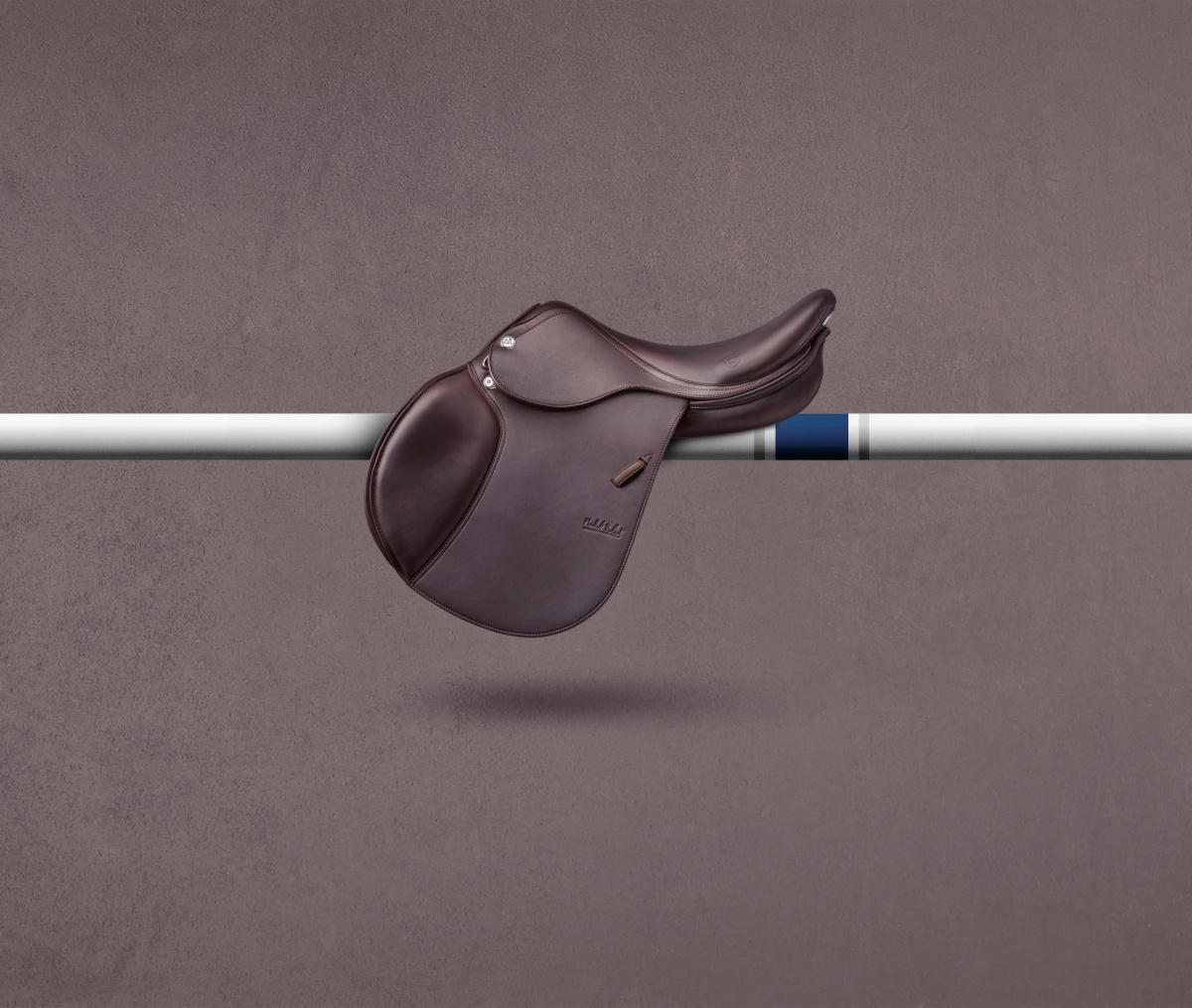
Parts of the saddle
Saddle tree – is a base construction for the whole saddle. Usually created from fiberglass- or resin-reinforced plastic.
Saddle seat – it can differ in shape, depth and size. Most frequently made of special, elastic materials that give it softness, durability, and anti-slip properties. Standard seat sizes include 15, 16, 17, and 18 inches.
Pommel – the highest point of the saddle that includes the front arch of the horse's withers. Some saddles have an adjustable pommel that can be either widened or narrowed. Adequate pommel size is crucial, as it is located in a sensitive area for horses. Too much pressure of the pommel in an ill-fitting saddle can lead to permanent damage to the nervous system. The most common pommel sizes include S, M, L, and XL.
Cantel – located at the back of the saddle, it’s responsible for even distribution of the rider’s weight as well as amortization.
Panels – found underneath the saddle. Their correct fitting prevents the creation of pressure points on the horse’s back. Most commonly, they are filled with synthetic wool that can be increased or decreased in volume to better fit a horse.
Flaps – can be found in the area where the rider’s legs rest. Their size depends on the equestrian discipline and the length of the rider’s femur.
Knee blocks – come in many sizes and shapes. Their purpose is to keep the rider’s knee in a stable position. Some saddles have knee blocks with Velcro straps, which allow the rider to move them in accordance with their needs.
Calf block – stabilizes the rider’s leg. Similarly to knee blocks, it can be secured by a Velcro strap.
Girth straps – either 2 or 3 straps that are a place of attachment of the girth to the saddle. It’s important that they are made of high-quality material, because otherwise they might get stretched or even break.
Buckle guard – a small piece of leather that covers metal buckles, which increases the rider’s comfort.
How to fit a saddle to a horse?
The first step in a saddle fitting process should be recognizing the anatomical shape of the horse. There are four main types of horse body types:
Standard - these horses have a straight and even line from withers to the croup. Horses like that require a saddle with evenly distributed wool or latex filling. However, it’s crucial to judge the fit of the saddle during a test ride.
Hollow - these horses have a significant difference between the height of the horse's withers and the lowest back point. This body conformation is often a result of old age, previous injuries, or breed genetics. Horses like that require a saddle with evenly distributed wool or made with shoulder free concept technology.
Downhill - these horses have a higher set croup in relation to the withers. This conformation is most commonly seen in young horses because their skeletal system is still developing. Horses like that require decreased saddle panels with either wool or latex filling. The adjusted volume of the panels levels the difference between croup and withers.
Uphill - these horses have higher set withers in relation to the croup. The difference should be leveled by the adjustment of the panels. The increased volume of the back panels is one of the best solutions, but always get a professional opinion from a saddle fitter.
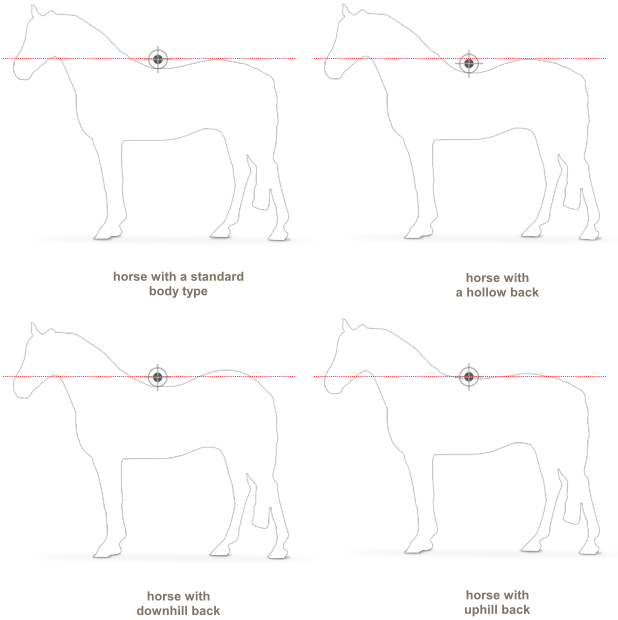
After the initial recognition of the horse’s body type, it’s time to move on to other steps in the saddle fitting process. When trying out a saddle, it should be put on the bare back of the horse, without any saddle pad. The horse should stand on a hard and even surface. Some things to be on the lookout during the saddle fitting process:
Balance of the saddle and the area where the saddle sits – at this point, it is important to find where the horse’s shoulders and last rib are to discover the area where the saddle should lie. The saddle should be stable on the horse’s back and lie at the center point. The cantel of dressage saddles can be set slightly higher than the pommel. A saddle that moves the center of gravity to the front will not only put unnecessary pressure on the horse’s shoulders but also will force the rider into a tilted position.
If the center of gravity is shifted to the back, then the saddle might compress the thoracic region of the horse’s spine. In this case, a horse might have a problem with raising its back and pushing the rider to tilt backwards. To establish a fine saddle position, it might be useful to put a ball in the middle of the seat – if the ball falls, then the saddle is not in a balanced position.
Panel width – a correctly fitted saddle shouldn’t come in contact with the spinous process or compress ligaments. Correctly fitted panels should be at least four fingers apart. Additionally, the panels shouldn’t have a narrowed gullet, because it will put pressure on the spinous process and ligaments. Too wide panels might put pressure on the horse’s back muscles.
Contact of the panels with the back – along the whole length of the saddle and on both sides, panels should have even contact with the horse’s back. In some cases, a saddle might have a slightly raised back panel to give the horse more freedom when the croup is engaged.
The area near withers – a correctly fitted pommel should fit 2 to 3 fingers. When a horse moves, its shoulder sways up and backward, so it’s important to check the fit of the saddle above the spinous process and on the sides.
Girth straps position – another useful tip to judge the fit of the saddle is to check the position of the girth straps. In a correctly fitted saddle, they will hang in the place where the girth should be placed. Girth straps positioned too far back might result in extra pressure on the shoulders put by the pommel, as well as compression of the lumbar spine by a saddle positioned too far back. While the too forward position of the girth straps might lead to injuries to the horse's elbow.
Straightness of the saddle – to check if the center of the saddle overlaps with the line of the spinous process, it might be useful to draw a line in the middle of the cantle and a second line on the spinous process. If the saddle is fitted correctly, then those two lines should overlap. Otherwise, the saddle might be situated unevenly, or the horse might have an untypical body type that requires further consultation with a saddle fitter.
Saddle length – a saddle shouldn’t go further than the area designated in step one. It can’t be longer than the area from the last rib to the spinous process.
Saddle tree width – the width of the tree shouldn’t be omitted, because of the movement of shoulders. It is wrong to assume that a horse with high withers should have a slimmer saddle. Everything depends on the movement of the horse's shoulder cartilage. A too narrow or too wide tree might restrict the horse’s movement.
The angle of the saddle tree – a correct angle of the tree should be exactly the same as the shoulder angle. Otherwise, it might lead to compression of the shoulders and wither. A resulting discomfort might lead to problems with the head position, unwillingness to move, lowering the back, and nervous head shaking. Further complications of too narrow tree include overloading of the sacroiliac joint.
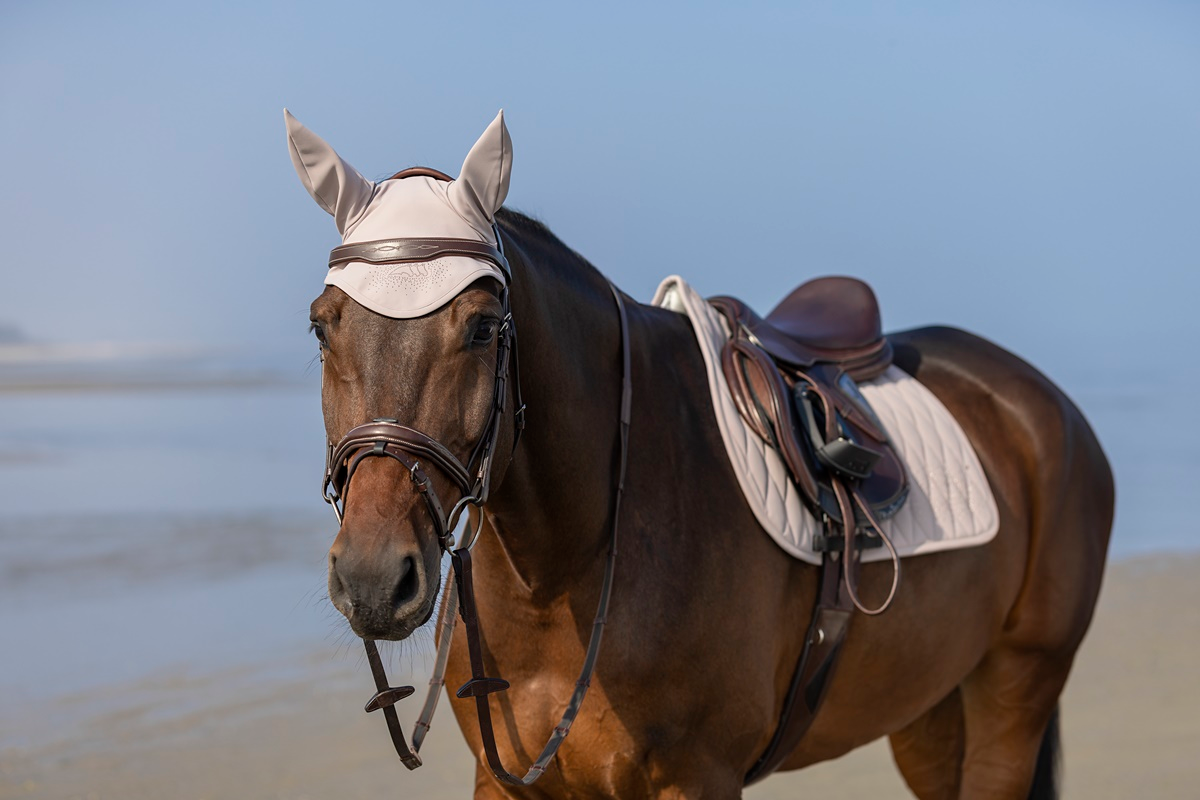
How to fit a saddle to a rider?
Correctly fitted saddle to a rider includes choosing adequate saddle type, size, and material. The process should include a few steps:
Choosing a saddle type – riders should choose a saddle that fits their preferable equestrian discipline. There are many types of saddles, but the most popular include jumping, dressage, general purpose, endurance, and pony.
Choosing the correct seat size – seat size depends on the rider’s weight and height. Sizes might differ between brands, but the most common sizes are:
15 inches – for kids and adults under 40kg and 145-165cm height
16 inches – for kids and adults from 41kg to 51kg and 145-165cm in height
17 inches – for adults from 56kg to 79kg and 165-175cm in height
18 inches – for adults from 80kg to 120kg and 175-190cm in height.
Choosing the correct size of the saddle flap is an extremely important factor that impacts the position of the leg. That’s why riders should measure the length of their femur. Riders with long femurs require a flap carved on the side in jumping saddles, or curved at the bottom in dressage saddles.
Sometimes the size of the flap might be chosen depending on the rider’s height. Shorter flaps for riders under 160cm height and longer flaps for riders over 170cm height.
Size of blocks – the size of blocks depends on the rider’s preferences and type of the saddle. Flaps play a crucial role in a stable seat and correct leg position.
Choosing the material – in this case, the rider’s preference is the key factor as well. Saddles can be made of real leather or synthetic materials. The material has a big impact on the grip, durability, and softness of the saddle.
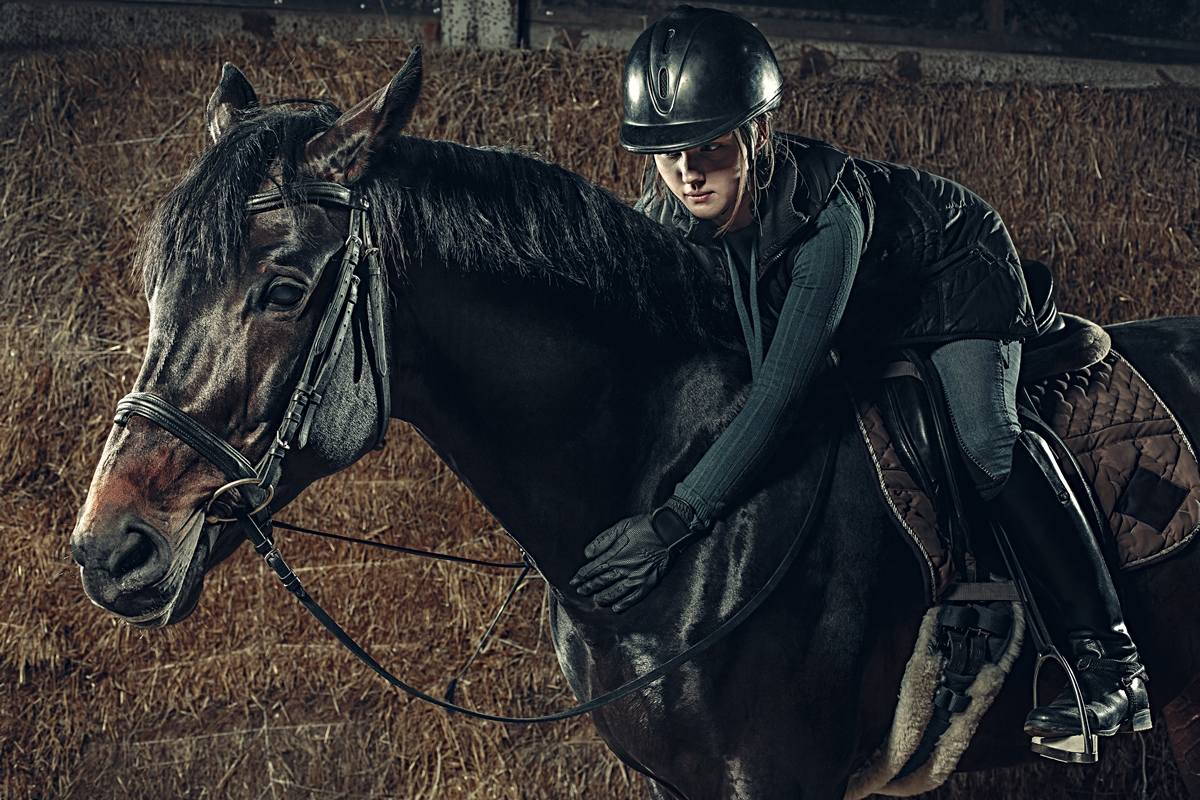
Signs of an improperly fitted saddle
A horse being ridden in an improperly fitted saddle may exhibit certain behaviors that are indicatives of its discomfort. Horse owners who are aware of alarming signs can quickly spot them and seek professional help. The most common symptoms of an improperly fitted saddle are:
tenderness, stiffness, or soreness of the horse's back
excess muscle tissue in the lower part of the neck
attempting to escape from the rider during a ride
constant straining of the abdominal muscles
sunken back
unevenly distributed sweat marks on the saddle pad
Hunter's bump
the development of white hairs in sensitive areas of the back
frequent stumbling
teeth grinding
nervous behavior during saddling (laying his ears flat, turning around)
shaking his head, tail swishing
difficulty in maintaining contact, biting the bit
bucking, rearing
nervous flicking or clenching of the tail
unwillingness to move, refusal to jump
lack of engagement of hindquarter muscles
four-beat canter
cold back
kissing spine syndrome
Proper saddle fit is crucial. It is also important to remember that even if the saddle fits properly, it still requires regular checks. A horse's body can change dynamically as a result of training, age, past injuries, and illnesses. The growth or loss of a horse's muscular system requires adjusting the saddle to suit the animal's developing physique.
Protect your horse's back by choosing the highest quality equipment. Check out our offer of saddles: Saddles
News from Equishop equestrian store:







